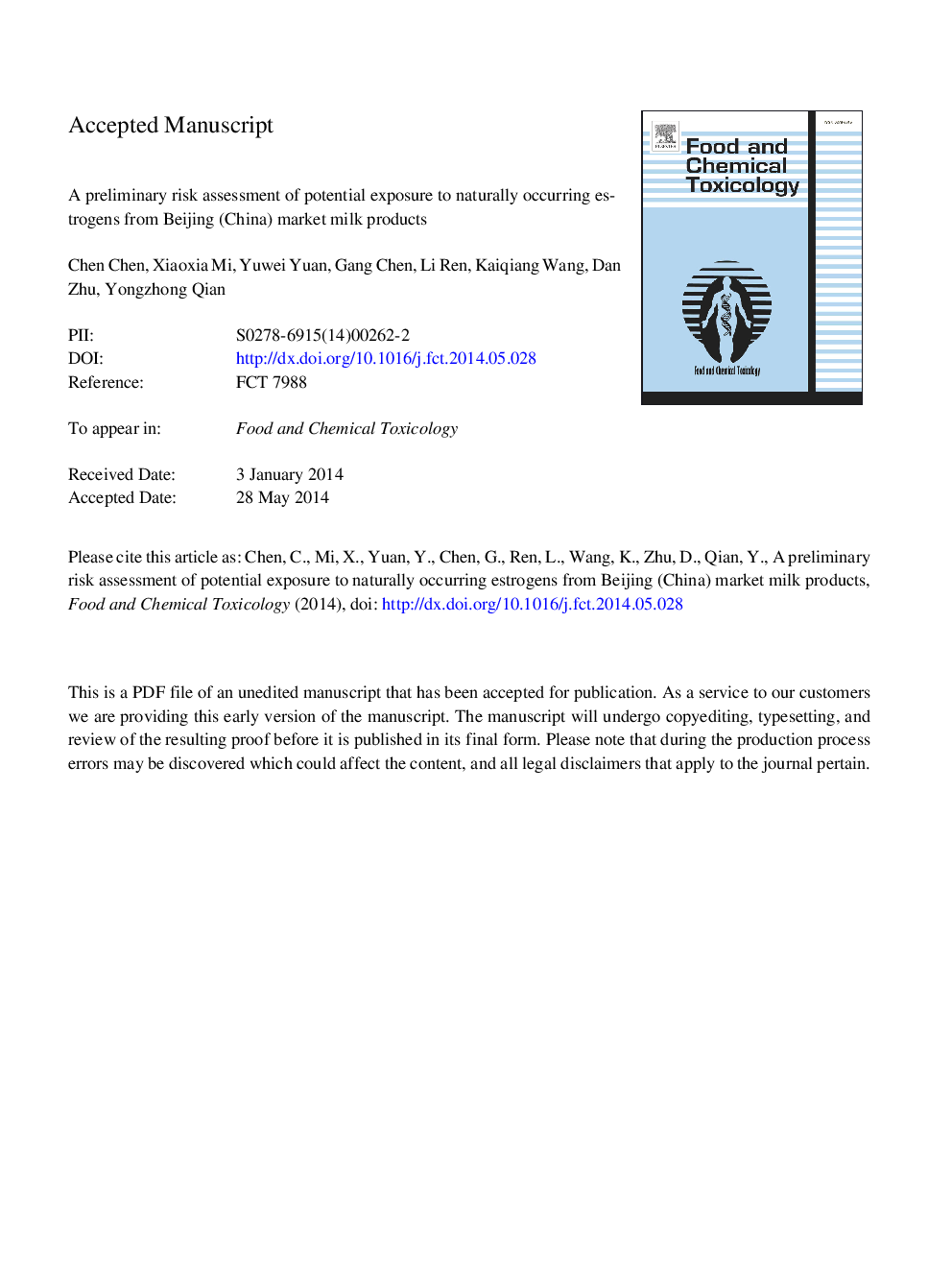| Article ID | Journal | Published Year | Pages | File Type |
|---|---|---|---|---|
| 5850082 | Food and Chemical Toxicology | 2014 | 32 Pages |
Abstract
This study was conducted to determine the occurrence of the natural steroid hormones estrone (E1), 17α-estradiol (αE2), 17β-estradiol (βE2) and estriol (E3) in 38 commercial milk samples obtained from markets in Beijing, China. Liquid Chromatography coupled with tandem mass spectrometry (LC-MS/MS) was employed to determine estrogens levels. The concentrations of E1, αE2, βE2 and E3 in different milk products varied from 0-146.12 ng/L, 0-70.12 ng/L, 0-31.85 ng/L to 0-2.18 ng/L, respectively. We compared exposures to estrogens through milk consumption with acceptable daily intakes (ADIs) and threshold for toxicological concern (TTC) to determine whether estrogen intakes from milk consumption are larger or smaller than the toxicity-based benchmarks. The combined margin of safety MOS (MOST) for total estrogens are about 72-99, 118-161, 539-1104, for 2-4, 4-7 year-old residential children, and adults, respectively. The lowest MOST for children of 2-4 years old result from comparing total of estrogens with the lowest TTC value (0.15 μg/person/day) (MOS = 3.5). The MOS values suggest that the individual and total estrogens that may present in milk are not causing a health risk for the local residents, including young children.
Related Topics
Life Sciences
Agricultural and Biological Sciences
Food Science
Authors
Chen Chen, Xiaoxia Mi, Yuwei Yuan, Gang Chen, Li Ren, Kaiqiang Wang, Dan Zhu, Yongzhong Qian,
